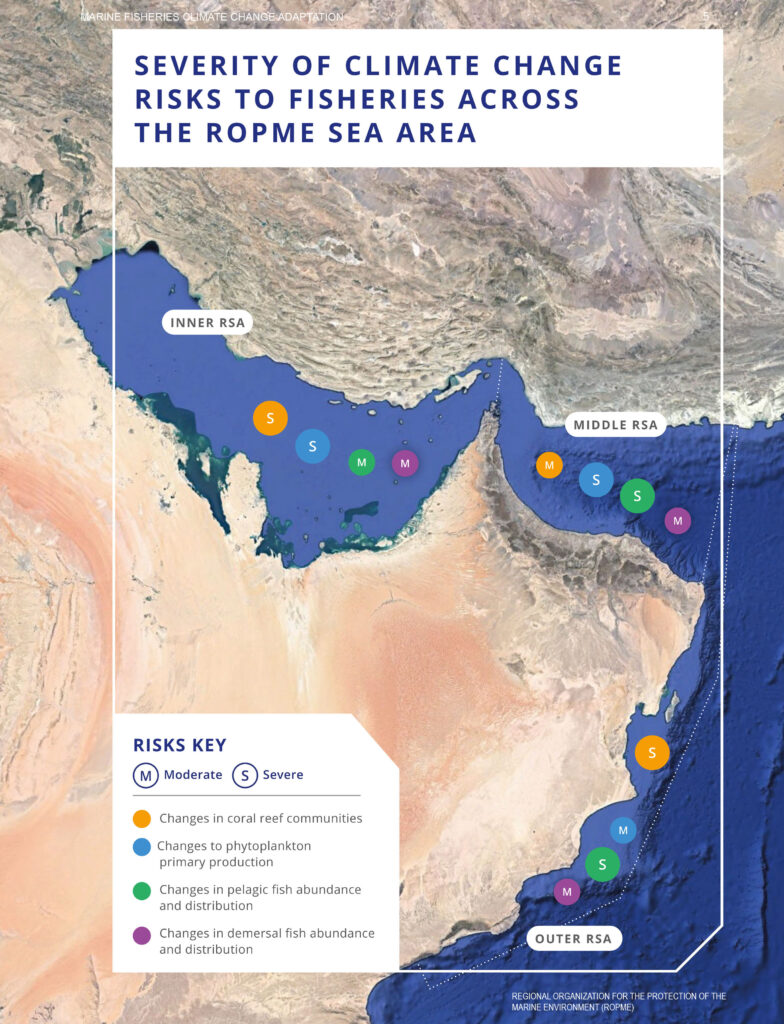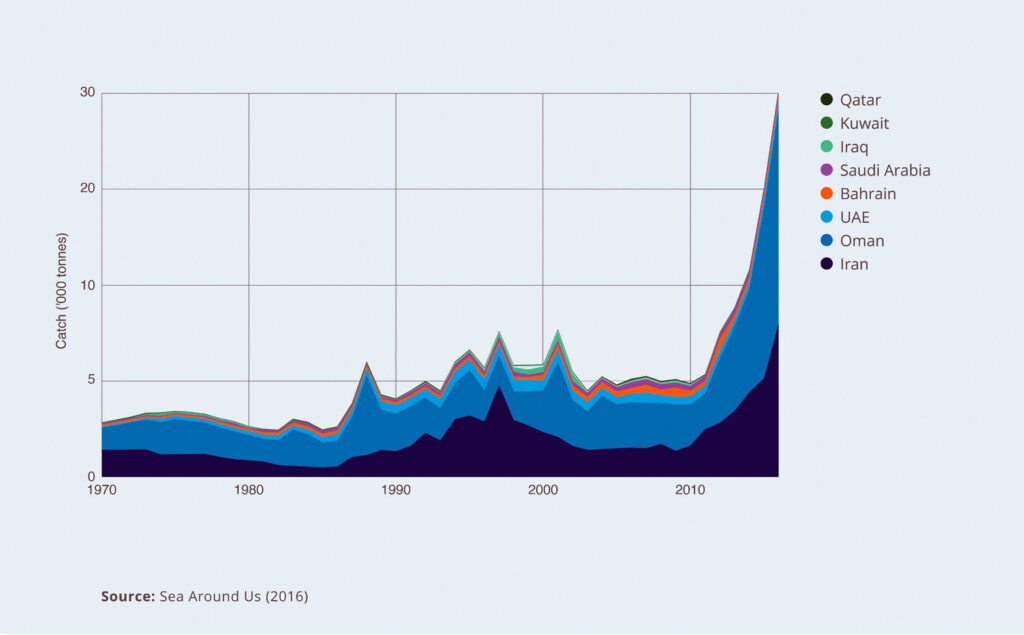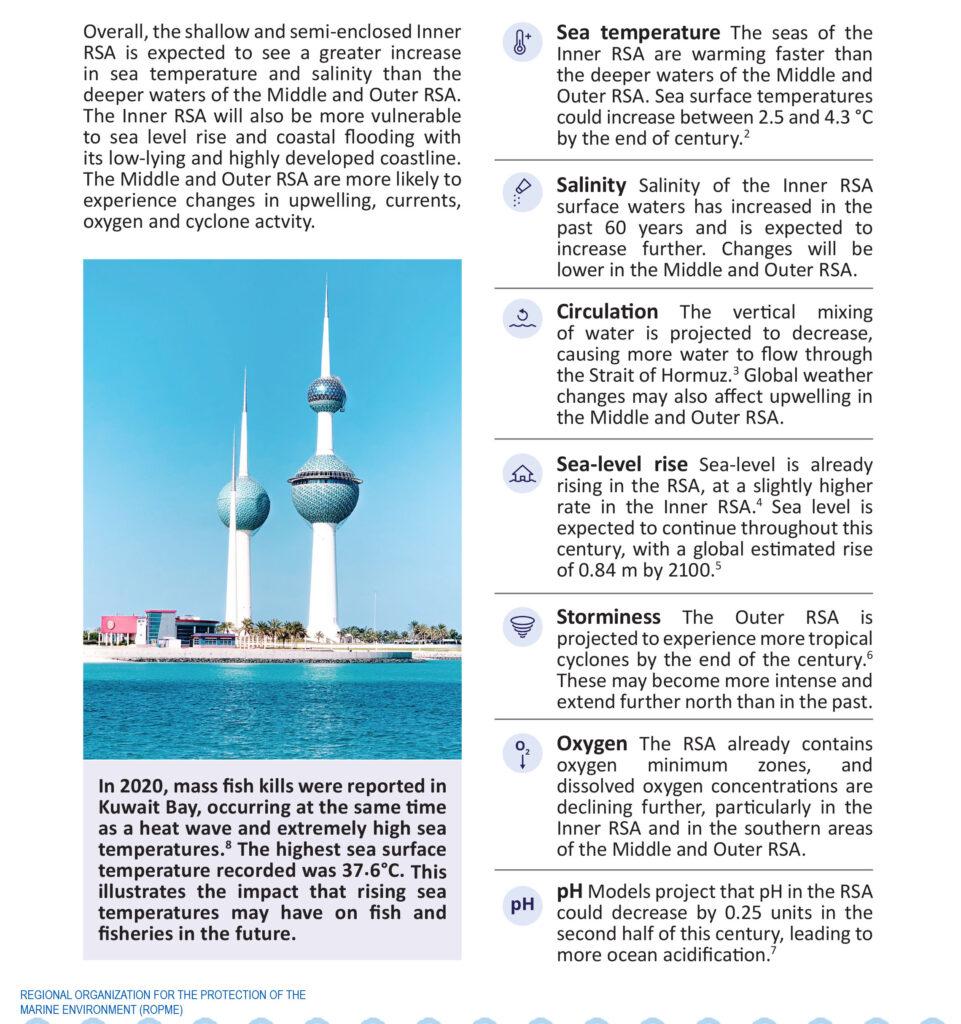Fisheries and Aquaculture in the RSA
Around 1.5 million tonnes of fish are caught each year in the region, mostly by Iran and Oman1. The main fisheries in the RSA are skiff, dhow and industrial fisheries, catching mixed demersal (bottom-dwelling) species, such as the giant catfish, small pelagic (oceanic) fish such as sardines, and large pelagic fish such as tuna, and shrimps. Skiffs and dhows deploy a range of gears including nets, lines, trawls and traps (gargoors). Industrial fisheries use trawls and seine nets.
In the Middle and Outer RSA, tuna make up 40% of landings, alongside catches of sardines, seabreams, groupers and shellfish. The Inner RSA has high landings of shrimps, as well as more coastal fisheries, such as kingfish, angelfish, groupers and seabreams. Some traditional fish stocks are now depleted, and so fishers are landing more low value species such as crabs.
Aquaculture (fish and shellfish farming) is growing in the region with commercial facilities developing in recent years. There is potential and ambition however for aquaculture on a larger scale, as an alternative to wild-capture fisheries. Aquaculture can be carried out on land, the coast or at sea, using sea cages, coastal ponds or recirculating systems. There are also a range of species that can be cultured, including fish, shrimps, shellfish and algae.

(Extracted from ROPME (2022) Policy Brief: Marine Fisheries Climate Change Adaptation. ROPME (Townhill, B.L., Mengo, E., Harrod, O., Buckley, P., Bradley, K., Le Quesne, W.J.F. eds.), Cefas, Lowestoft, 16pp.)
Annual Fish Catch from the ROPME Sea Area by ROPME Member States

How Climate Change is affecting the ROPME Sea Area
